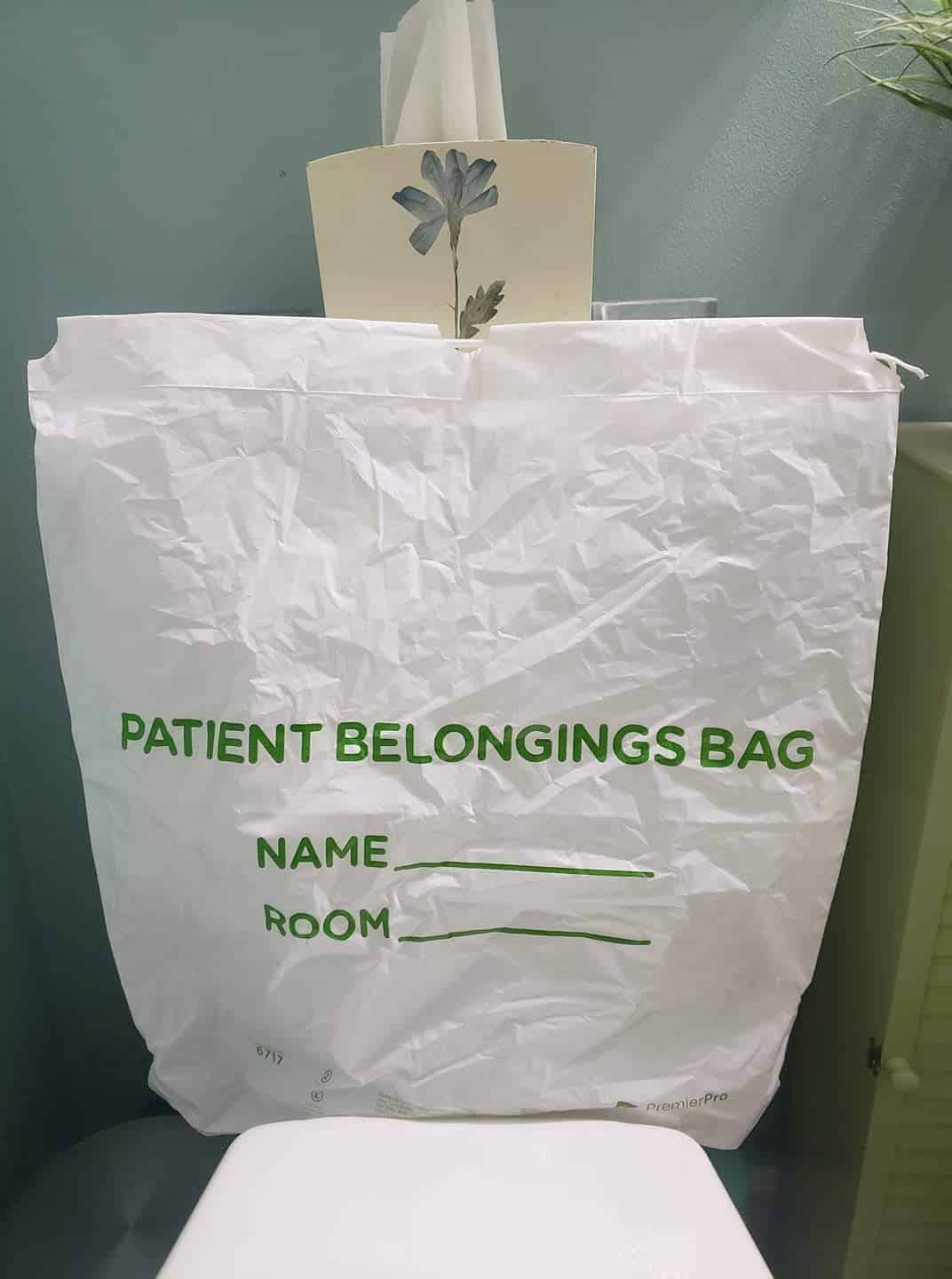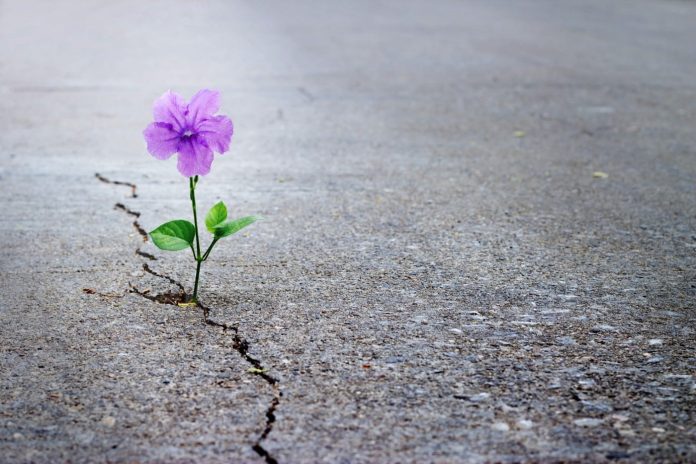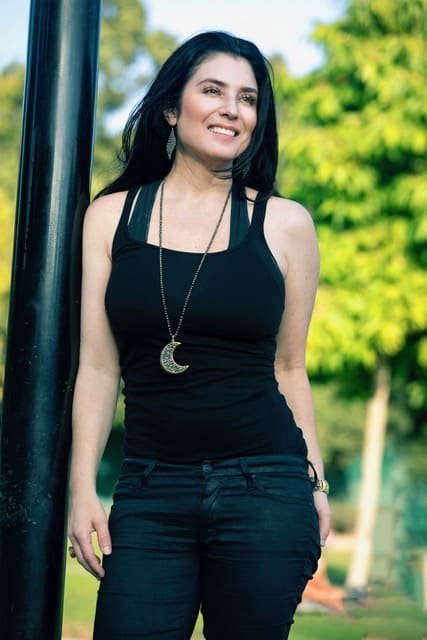“I like it when a flower or a little tuft of grass grows through a crack in the concrete.
It’s so f***in’ heroic.”
–George Carlin
When you look at this photo, you probably see nothing more than a plastic bag.

I see the trigger that caused me to have two panic episodes in the hospital— the first roughly three years ago, and the second about a year ago — and ultimately, the catalyst for me realizing I was struggling with unaddressed childhood trauma tied to my mom’s sudden death 25 years ago, and needed to seriously consider trauma therapy (which I began almost five months ago). Unfortunately, due to current events with the coronavirus pandemic, social distancing and the transition to virtual therapy sessions as the new normal for the time being, my therapist and I came to the decision together to table any further trauma “digging” until we’re able to meet in person again. I quickly learned just how emotionally triggering and draining these sessions are, and that I need as much support as I can get — in person — to get through them.
I’m proud of the difficult trauma work I’ve already done, I’m proud of myself for taking the first step (despite how long it took) to recognize that I needed this help, and then getting it — without any shame, explanations, justifications or apologies. And I know I still have a lot of hard, emotional work ahead of me when we resume. But that grueling work is what needs to be done in order to begin peeling back many complex layers, and prying beneath the surface I’ve just barely scratched all these years of loss, trauma, triggers, and how this has all manifested in my adult life.
It has taken me a while to open up about all of this, but recently I had to pick something up for some medical labs, and was sent home with this bag. I didn’t think anything of it at first, because I only saw the white side of the bag. It wasn’t until I got home, put it down and saw it in my dining room, and the words on it, that I realized it wasn’t just any plain old white plastic bag — and felt the familiar panic rising up.
I crumpled the bag up in a ball and threw it in the trash. I crumpled myself up in a ball and threw myself into bed. I took the bag back out of the trash and broke down crying and wanted to set it on fire.
Because 25 years ago, I saw this very same ‘patient belongings bag’ in the dining room of the house I grew up in…and its contents were the clothing & jewelry my mom had been wearing when she entered the hospital, and died less than two days later.
In April 2017, I was in the hospital for a diagnostic procedure (my first time in a hospital as a patient) prior to surgery, and suddenly found myself inconsolable. And then I had an epiphany: the plastic belongings bag I had been given by a nurse. A light bulb went off in my head. And then everything got very dark.
And this is how a plastic bag became the thing that makes me come undone.
My hope is that over time, addressing & talking about this and other trauma triggers/memories (and addressing associated cognitive distortions) will help to lessen the panic and intense emotion an inanimate object or other visual association has been causing me.
Because right now, it feels like a Goddamn plastic bag has control over me.
I keep catching myself saying it’s stupid or it’s silly, because…it’s just a bag. But in truth, nobody else can possibly know or understand how “just a bag” makes me feel. And now I recognize this as trauma.
My plastic bag is someone else’s fireworks that trigger the memory of an explosion that nearly killed them while deployed overseas. Or another person’s certain smell that they associate with someone who abused them.
This is hard, heavy stuff, and I understand not everyone is comfortable with it. I’m still not completely comfortable with it. But if you’re still reading, please remember to be gentle & kind with yourself and with others.
Because these are the invisible battles people are fighting as they go about their day, doing the best they can and just trying to be okay. These are the silent struggles we so often don’t see or know about that keep people up at night. These are the reminders we all need that everyone carries an invisible burden on their back, and what we see portrayed on social media is rarely a complete picture of what people are dealing with internally.
At eight years old, I watched my mom being loaded into an ambulance in our driveway from a bedroom window. That was the last time I ever saw her. That was the last time I would ever see her again for the rest of my life. Will I ever “get over” that? No. Certainly loss and traumatic experiences change shape over time, and we somehow figure out how to continue on with life and adapt with that massive void in our hearts. We learn to “dance with the limp,” in the words of Anne Lamott, one of my favorite writers. I know many, many people who have experienced and witnessed horrible, painful things that have changed them forever. They will never be the same. They will never “get over it.” They will be forced to learn a new normal and to figure out how to breathe with a piece of their heart missing, and they will survive and maybe even thrive eventually. But there is no date they will circle on a calendar with a note: “Be done hurting about this by today.”
These experiences are a key part of our stories. But do they define us? No. Neither does how long it takes us to process them, to feel a little less broken apart, to start to patch our shattered hearts back together, to feel “okay” again. And it’s okay if we’re never completely okay again.
It’s okay if we dance with a limp forever.
And, a note about grief now that I’ve recently survived the 25th anniversary of my mom’s death, and another Mother’s Day without her: grief is not linear. Neither is trauma. There is no straight line from point A to point B. There are no shortcuts. There is no right and wrong; no mathematical equation or formula. It has taken many years for me to figure out that the reason I’m still carrying around such a heavy burden of grief and trauma from my childhood is not because I’m broken, weak or somehow defective at healing. It’s because I experienced a significant loss and associated trauma at an age where my brain was still growing & developing, and simply was not capable of processing the loss and its magnitude. The result in these cases is typically a sort of delayed processing that only really begins to occur later in life.
And then one day at 30 years old, you have a panic episode in a hospital (followed two years later by another), and suddenly realize the sheer weight of this grief and trauma you’ve been carrying on your back for 22 years is actually crushing you. It’s winning.
So I decided to take back my power and start on the path of turning trauma into healing. I’m giving myself credit for doing the hard, painful work…and giving myself grace that it’s not going to be an overnight process.
This bag is my cross to bear. It is the tidal wave that keeps trying to ravage my boat, knock me down and drown me.
But I’ll be damned if I’m going to let it steer this ship.
***
Anti-racist resources, because silence is not an option
~~~~~~~~~~~~~~~~~~~~~~~~~~~




For Julia Morin to lose her mother at the age of 8 is heart wrenching. For her to share this experience is heart warming as she has opened this wound to others. May Julia feel the love and hugs from all those who read her story. My heart goes out to Julia.
Regina, thank you so much for your comment, which I am just now seeing. I so appreciate your kind words and that you took the time to read this piece.
Julia